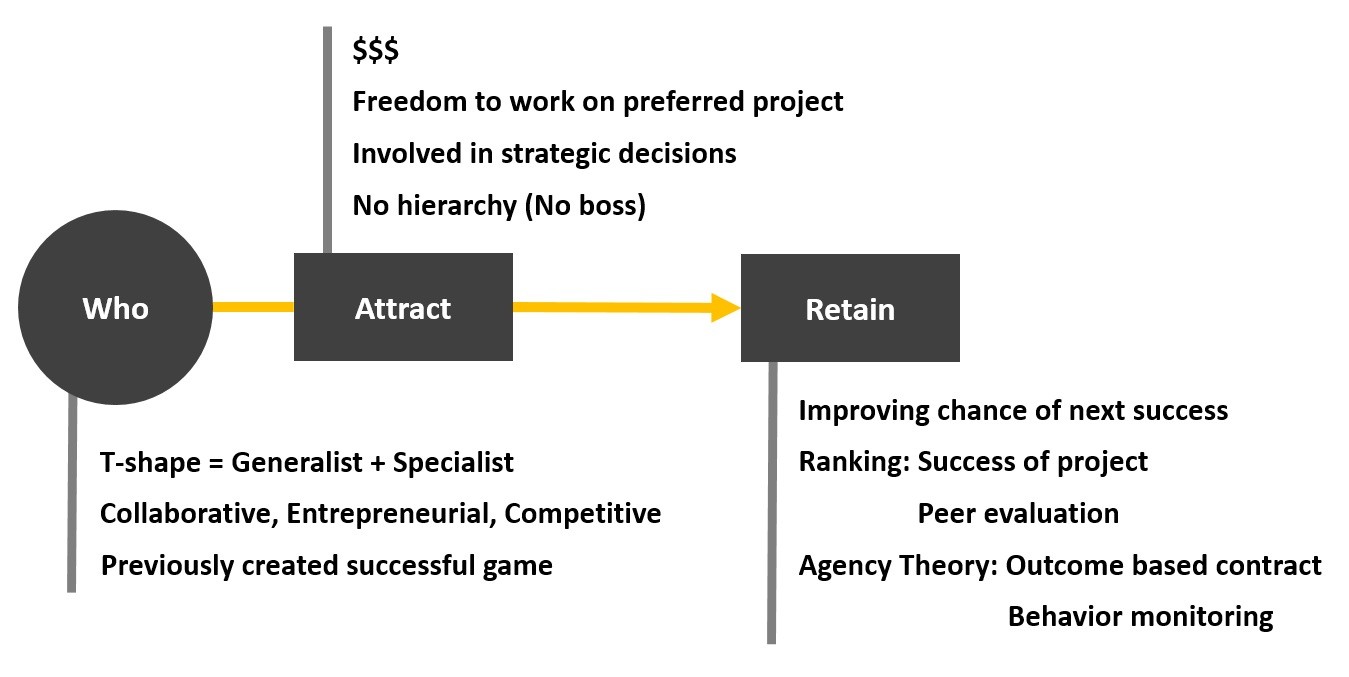
Valve: How to retain talent?
Last week I attended an intensive strategy course taught by Patrick Gibbons, Academic Director at Michael Smurfit Graduate School of Business UCD, where we discussed a series of Harvard Business cases among one was how Valve Software successfully had manged to attract and retain top talented game developers. I found the case study very interesting and super relevant for any leader aspiring candidates on LinkedIn.
Background:
Valve is the software company behind the gaming platform Steam and popular titles like Half-Life, Counter-Strike, Left 4 Dead and Dota 2. Valve was founded in 1996 on the notion that making video games was hard and that most titles would fail, but a few blockbusters would be remarkably profitable. The question was if blockbusters was randomly distributed and hitting that lucrative profitable success was just a matter of chance, in which you just wanted to bet on as many horses as possible.
The perception at Valve was that people who had created a blockbuster before would do it again. With other words blockbusters wasn’t just random chance, it was all about attracting and retaining the right talent that would give a predictable success.
If you want to read the Harvard Business School case study, you can find it at hbs.edu

Who to hire?
Valve was looking for T-shape profiles that could contribute across functions in different teams, but had a unique and specialized skill that could be the core of a project. Attracting entrepreneurial profiles that had created a successful game previously was at the core of Valves recruitment strategy, because previous success ensured a higher predictability of future success.
Attracting successful entrepreneurs
How do you attract game developers that have already made a successful game and potentially earned good money doing so? The challenge was that Valve was looking for entrepreneurs that had showcased that they could be stars on their own, and now Valve wanted them to take a job working for somebody else. What Valve came up with was a unique organizational structure that allowed people to work on exactly their preferred project. There would be no hierarchy and no one telling you what to do. Everyone would be involved in strategic decision making, ensuring that everyone had a saying in which projects Valve would be working on. Naturally everyone would be paid well, so there wouldn’t be a direct monetary incentive in leaving.
Retaining talent
Retaining talent is important for any organization. The nature of Valves flat organisational structure would allow for good utilization of peer evaluation and behaviour based compensation. Everyone would be rating each other’s contribution and success of the final project would be affecting compensation.
What made Valve really unique was the fact that Valve would increase every single employee’s chance of delivering the next big blockbuster. As an employee at Valve you would be working across multiple projects at the same time. If you did a good job on someone’s project it was more likely that you could attract talented employees to work on your own project. Remember everyone had the freedom to work on whatever project they liked. Furthermore, by working on several project at the same time you would be spreading your risk. One project might fail as another one would be a success. This way you would still make good money. Similar to managing an investment portfolio and spreading risk across different securities.
The secret source
The secret to Valves successful talent management strategy is how they manged to embed its employees:
- It was extremely hard for the employees to monitor the size of their contribution to a project. There was no way for an employee to claim 100% ownership of a blockbuster, because so many talented people would have been involved in the project.
- Every employee was almost guaranteed to be part of a success, working across multiple projects by that hedging their exposure to failure.
- Every project group was unique, so the risk of a whole team leaving would be minimal, as each individual would have stakes in different projects.
All over Valve was successful in creating an organization that would attract the very best talent and ensure that no employee would be thinking about leaving.